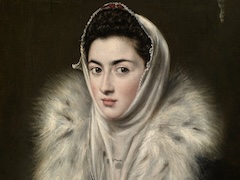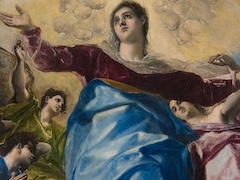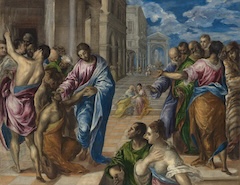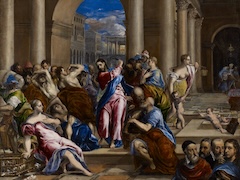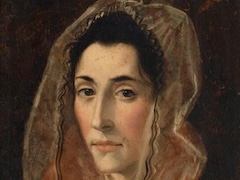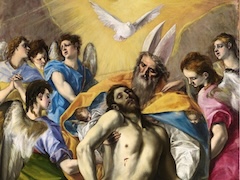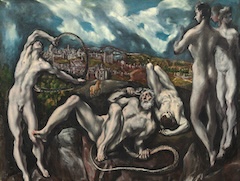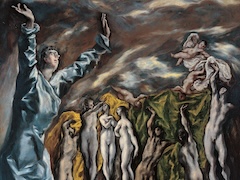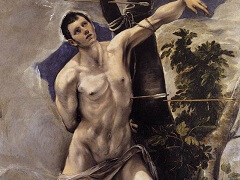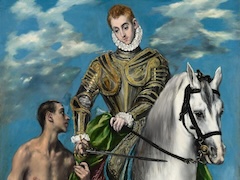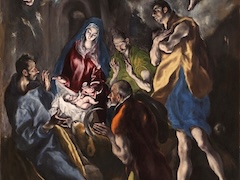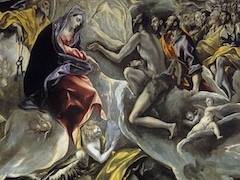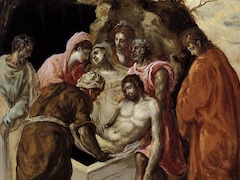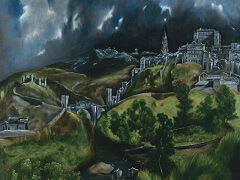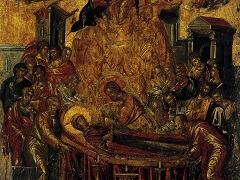The Disrobing of Christ, 1579 by El Greco
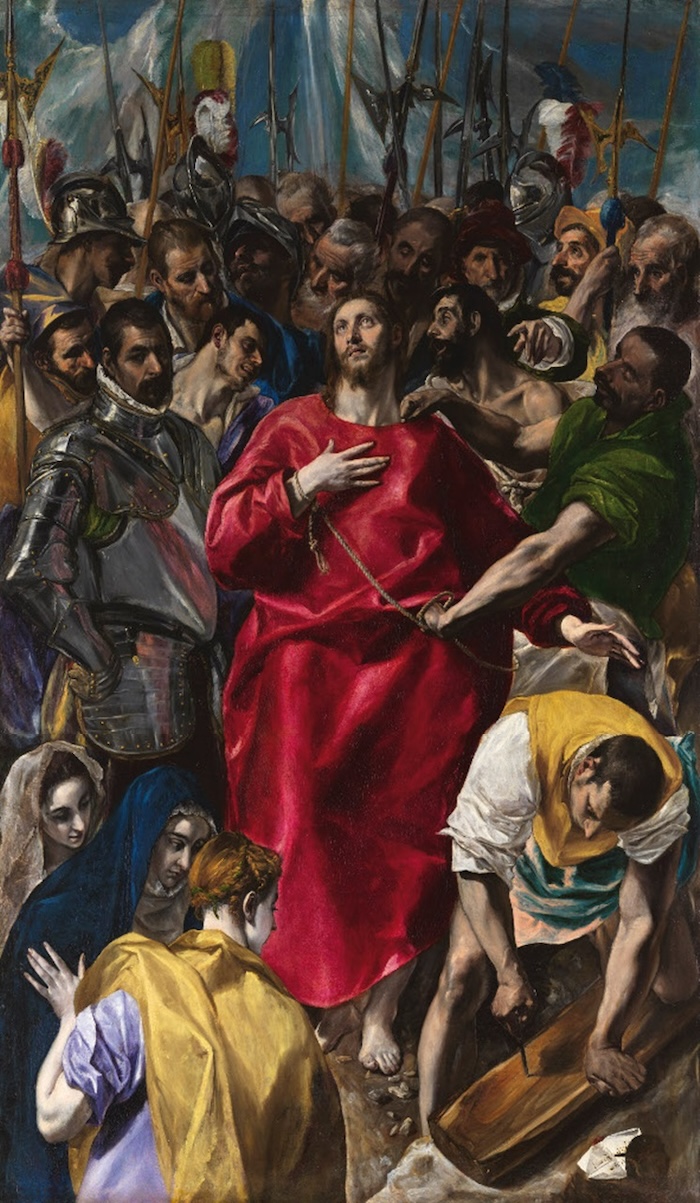
As a masterpiece it was already hailed by Alejo de Montoya, the Tolcdan goldsmith and arbiter in Greco's litigation with the Chapter of the Cathedral; and this praise decided the issue of remuneration in Greco's favor.
The Disrobing of Christ shines like a most precious jewel. The burning ruby of Christ's robe consumes the cool tonalities that gravitate around this flame the gray, the ocher, the blue and violet and creates a hitherto unseen splendor: the complementary blue shadow on the yellowish surcoat of the bent figure, the intense reflections of red on the gray-violet of the knight's armor.
But, just as in the Cleansing of the Temple, it is the spatial organization that is intended to convey visually the psychological theme here, the divestment of Christ on Calvary. The tunic, its presence and integrity, is the reality here. But this reality, as we know it, is going to be destroyed, divided among the soldiers. And the story of this impending drama is given in the very drama of the space. Around the powerful axis of Christ's figure a compact volume-sphere of realistic heads is constructed and is advancing on us. Below is the second level of spatial activity: the intersecting planes (in the modeling and the positions of the three Marys and of the soldier that prepares the wood) create a restless, Mannerist, "cubistic" space. The two levels are not merely juxtaposed, they interpenetrate; and the very uneasiness of this separation communicates to us the drama of anxiety and divine release.

